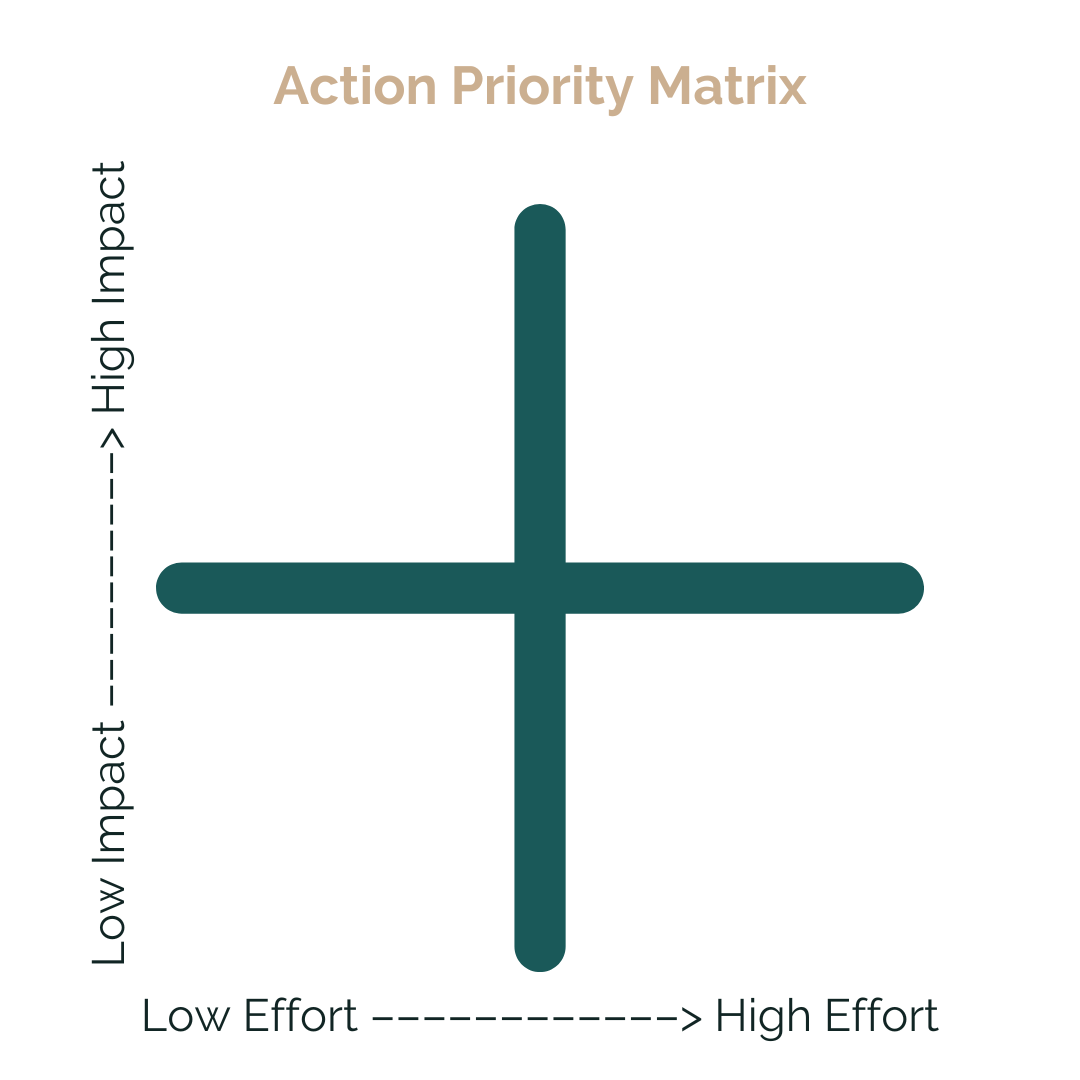Ep 55: Project Prioritization Made Easy: How to Use the Action Priority Matrix
Powered by RedCircle
Project Prioritization Made Easy: How to Use the Action Priority Matrix
I was working with a client on a project recently where we were identifying projects that they should keep doing and projects that they should stop. It got me thinking I should share this process with my incredible community.
If you run an online business, you know how overwhelming it can be to juggle a thousand projects while keeping priorities in check. However, using an action priority matrix can help you determine which projects to prioritize, which ones to eliminate, and where to direct your energy and attention. Let’s take a look at what an action priority matrix is and how it can help you improve the efficiency and effectiveness of your programs and team.
What is an Action Priority Matrix?
An action priority matrix is a tool that helps identify projects that you should potentially stop, evaluate before continuing, or keep doing. It is a way of looking at existing projects or deliverables inside your program and measuring their impact and effort. The matrix is made up of a vertical and horizontal line, with impact levels ranging from low to high, and effort levels ranging from low to high.
Inorder to make your own action priority matrix, Draw a vertical line and then draw a horizontal line coming from the bottom of the vertical line, or just draw a big plus sign. The left side is impact, the bottom is low impact, and the top is high impact. The horizontal line is low effort towards the left and high effort towards the right.
How to Use an Action Priority Matrix
To use the action priority matrix, list out all the deliverables and projects in your program or projects on your plate. Then, determine the amount of effort it takes to produce each project or task accurately. It would help if you asked your team members or contractors to get an accurate perspective of the amount of effort that goes into each project.
After identifying the amount of effort for each project, the next step is to evaluate the impact of each deliverable or project. You can use member surveys, KPI data, anecdotal feedback, and metrics to determine the impact. If a project has a negative impact, it's best to cross it off the list entirely.
Once you have determined the effort and impact of each project, it's time to use the action priority matrix to classify them. Projects that have low effort and high impact are quick wins and should be continued. High effort and high impact projects are longer-term, and you want to continue doing them. However, it's essential to evaluate the effort required to make sure it's worth the impact.
Low effort and low impact projects should be evaluated to determine if there is a way to increase their impact without increasing the effort required. On the other hand, low impact and high effort projects should be stopped or evaluated to determine their impact on the other projects and operations.
Benefits of Using an Action Priority Matrix
Using an action priority matrix can help you improve the efficiency and effectiveness of your business. It helps you identify your quick wins, longer-term projects, and areas that need to be evaluated or stopped. It can also increase the clarity and simplicity of your programs for your team members and customers.
Simplify Your Business
Running an online business is not an easy task, but with the use of an action priority matrix, you can simplify the process of evaluating projects and deliverables. It's essential to identify the impact and effort of each project and use the matrix to classify them. This helps you prioritize projects that are quick wins, longer-term, or need to be evaluated or stopped. So, if you're running an online business, make sure to use the action priority matrix to increase the efficiency and effectiveness of your programs and team.
Stay Connected
Watch on YouTube | Listen on Apple, Spotify, or Google Podcasts
To learn more about what I do and how I can help you, tap here.

